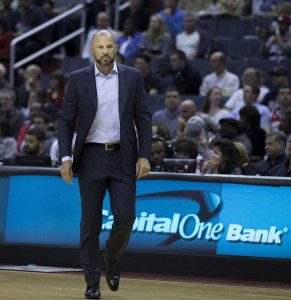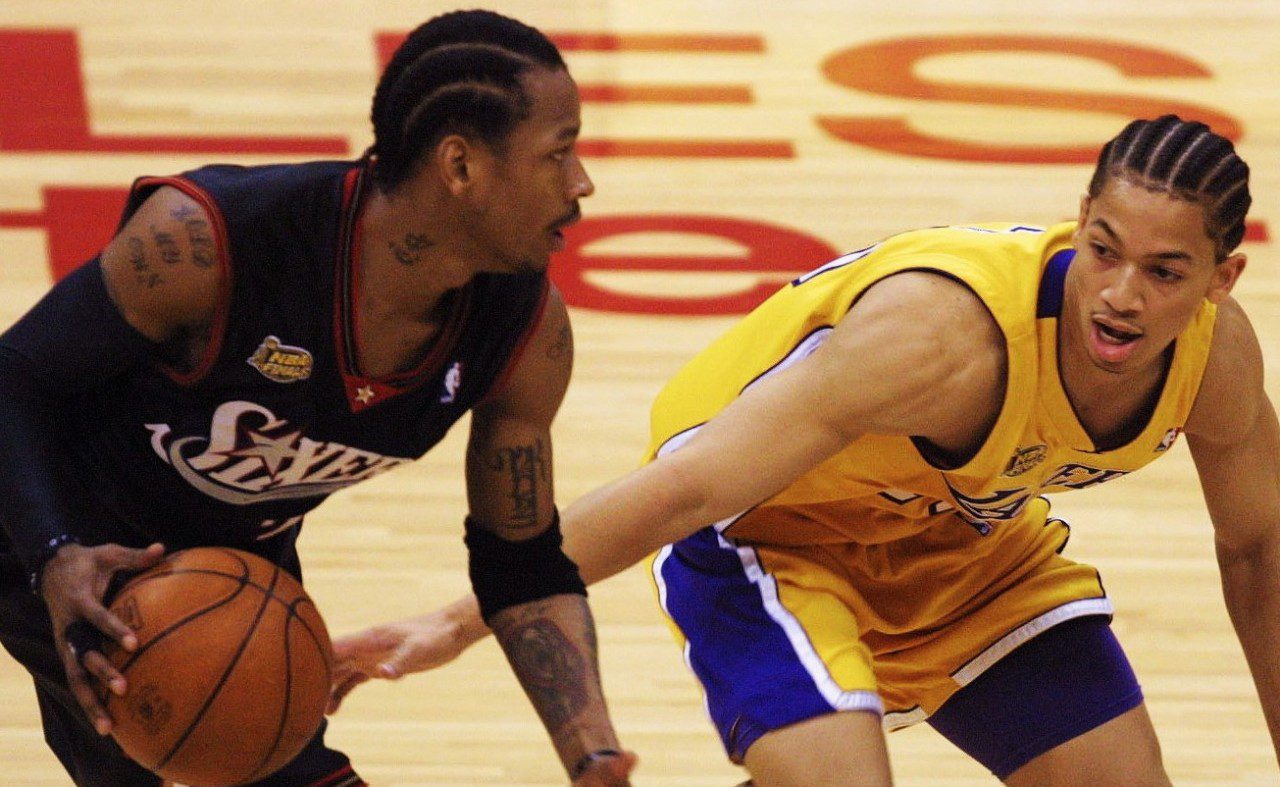
Image courtesy of Keith Allison/Flickr.
One of the great things about the NBA playoffs is the tactical adjustments that coaches and teams make during a series. Switching up substitution patterns, making different configurations in terms of lineups, and the deployment of certain players on star players from the opposition. The Brooklyn Nets and Toronto Raptors series has seen many adjustments by both teams, with the Raptors even unearthing Chuck Hayes for eight minutes with funky lineups that included Lowry playing with the four guys acquired in the Rudy Gay deal. Alan Anderson and Shaun Livingston played nearly the same amount of minutes which is weird in of itself considering that Anderson was bad in Game 4.
The Raps committed to hard-doubling Joe Johnson whenever the opportunity surfaced in the post, something that in previous games the Raptors either didn’t do or did without much conviction. It was a decision that carried with it the inherent risk of having closeouts be as synchronized as possible. The results were as good as Toronto could expect, with Johnson by far having his worst game of the series and having minimal impact on the proceedings. That’s a big thing and one of the reasons this series is 2-2 instead of 3-1. Johnson until Game 4 was as efficient as ever, with his size and strength draining the energy of DeRozan and opening up avenues for penetration and offensive flexibility.
It’d be naive to say that the Raptors found an antidote for the Johnson conundrum, because Toronto tried pretty much everything short of hard double-teams during the first three games. John Salmons did as good a job as any against the Nets guard. He’s got enough size and reputation to guard Johnson with force and body him out of positions that would otherwise bend a team’s defense. Every inch matters, so a post-up from 14-16 feet can make the difference over one from 17-18 feet, indirectly impacting the results on offense. It wouldn’t be shocking at all that we as watchers are simply overrating the minutes that Salmons had on Johnson and it was just an aberration relative to his body of work in Games 1 through 3.
And it was imperative that Salmons was effective on defense because he’s in the same boat to perhaps a lesser extent with Landry Fields. They’re both minuses offensively, but Fields is an able cutter and screen-setter, and Salmons can function as a secondary ball handler and initiate the offense, especially with Terrence Ross’ minutes dwindling. They can constrict the spacing of the offense even with their niche attributes which makes what happened in Game 4 fascinating.
Toronto survived parts of the third and fourth quarters despite having virtually no flow and relying heavily on the likes of Greivis Vasquez. It takes some stones as a coach to be able to entrust lineups that on paper would have little chance of surviving.
The Nets would salivate at the opportunity of seeing the likes of Chuck Hayes and Steve Novak on the court for any stretch of minutes again. Brooklyn overall seemed like a team that couldn’t figure a Plan B on offense besides Joe Johnson, though shooting 19-of-29 from the free-throw line doesn’t help. They’ve produced two fewer points per 100 possessions than what they averaged in the regular season and 3.5 points below the Nets’ regular season OffRtg since January 1.
Both teams don’t run and have plays revolving horns actions, especially the Nets, who run their offense through Pierce and Garnett:
You’ve seen this a lot with the Nets during this series; it’s a staple of their offense. They run this type of action even when Pierce is without KG, though it doesn’t present the same plethora of subset play opportunities if Mason Plumlee is in that scenario. In the clip above, Johnson got to the post, ran a weird flare screen for Pierce, and got penetration from a pump fake. The drawback from this is needing such precise movements because of how little pace the team uses.
Toronto isn’t too dissimilar from Brooklyn in that standpoint, though their offense is a bit less structured. Much of it is dependent on the likes of DeRozan and Lowry being able to freelance a bit on pick-and-rolls and take a volume of shots that aren’t exactly the most efficient. Some of it is due to the limitations of Amir Johnson and Jonas Valanciunas. Johnson is perhaps the best two-way player on the Raptors, but he’s not exactly at 100 percent health, which could explain the sporadic performances he’s shown in the playoffs. Game 4 Amir is the type of Amir that can do serious damage to a team like Brooklyn, which has little rim protection other than Plumlee and he’s an expert in those contorted layups off pick-and-rolls. Had Game 4 Amir played in Games 1 and 3, perhaps the Raptors would have a chance in winning this series.
Valanciunas is more of an interesting case. He’s been great in the rebounding department and on occasion has made KG look old, and he presents himself well in rolling to the rim, but he can be inconsistent in setting hard screens and can be quite turnover prone when isolating him in the post. Toronto has gone away from that in Games 3 and 4 with more of a perimeter attack revolving DeRozan/Lowry/Vasquez. Perhaps that’ll change in Game 5 to open up a dimension for Toronto. Every advantage matters and adding new wrinkles for both teams could be the key in having the ultimate edge.













